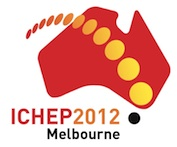Speaker
Dr
Hiroshi Yokoya
(National Taiwan University (TW))
Description
With 5 fb^{-1} LHC data at 7 TeV collected in 2011, current mass limits of the chiral 4th generation quarks have reached 600 GeV, nominally entering the regime of perturbative unitarity violation.
The very large Yukawa couplings of these quarks may require nonperturvative treatment, including the possible formation of tightly Yukawa-bound "mesons". Assuming an almost degenerate 4th generation quark doublet (heavy Isospin) and large Higgs-boson mass as required to be consistent with the electroweak precision observables, the spectrum of Yukawa-bound mesons would likely be M(pi_1) < [M(pi_8), M(omega_1)] < M(omega_8), where pi and omega copy from isospin notation, while 1 and 8 in subscript reflect the color of these mesons. The leading production is q\bar{q} --> omega_8, with a rather rich decay phenomenolgy. A possible "double resonance" final state appears where omega_8 decays predominantly into a pi_8 plus a weak boson, followed by the decay of the pi_8 into a weak boson plus a gluon. This unusual final state is realized when the mixing of 4th generation quarks with SM quarks is small, which is consistent with absence of new physics signals from flavor physics. We perform a phenomenological study for the signature at the LHC using the W-jet tagging method, including SM background estimation and demonstration of resonance mass determination. This study also serves as a precursor study for the search for other resonances with the same final state, such as technicolor models with QCD-colored techniquarks.
Authors
Prof.
George Wei-Shu Hou
(National Taiwan University (TW))
Dr
Hiroshi Yokoya
(National Taiwan University (TW))
Johan Alwall
(Fermilab)
Dr
Tsedenbaljir Enkhbat
(National Taiwan University)
